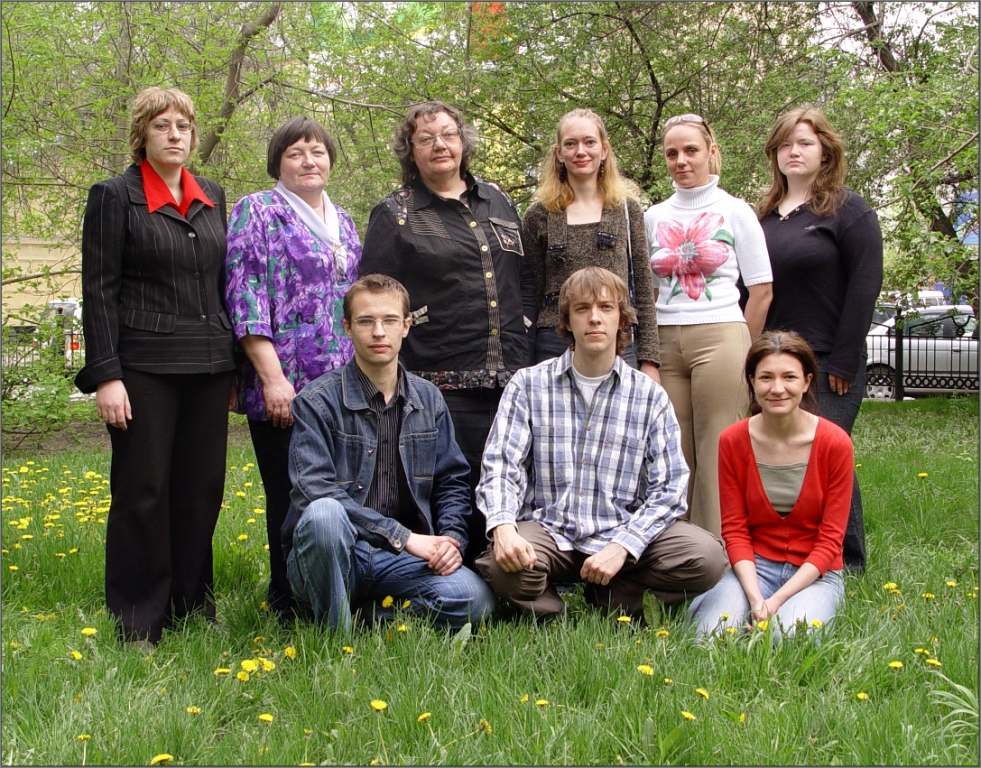LABORATORY
OF BEHAVIORAL ECOLOGY OF COMMUNITIES
Institute of Systematic and Ecology of Animals,
Russian Academy of Sciences, Siberian Branch,
630091, Russia, Novosibirsk, Frunze St.11
Institute of Systematic and Ecology of Animals,
Russian Academy of Sciences, Siberian Branch,
630091, Russia, Novosibirsk, Frunze St.11

Staff
and
Students. Head
of laboratory Zhanna Reznikova (www.reznikova.net).
The laboratory includes one professor, two doctors of
biological
sciences, two research fellows and three PhD students.
History of the laboratory. History of the laboratory began from the organization of a laboratory for studying social and gregarious insects in 1977 under the tutoring of Zh.Reznikova. After several years of self – government that laboratory was included into the Laboratory of Insects Ecology. In 2004 a research group for studying social insects initiated the Laboratory of Community Ethology.
General information. The main problem concerns a role of flexibility, learning and communication in maintaining community structure. Our methodological approach is based on the methods of behavioural ecology. We elaborate series of field and laboratory experiments simulating natural situation in rather dramatic manner. This approach enables us to separate different factors that influence animal behaviour.
The laboratory possess unique regional collections of ants and aphids. The main recent discovery, as “The Independence on Sunday” gives this, is “Ants Language” by Zhanna Reznikova and Boris Ryabko. Using ideas of Information Theory has enabled to demonstrate that red wood ants possess sophisticated symbolic and flexible communicative system that allows them to transfer information concerning coordinates and number of objects. These intelligent insects even can grasp regularities and use them for shorten messages.
Long term field experiments resulted in a concept of a balance between positive (such as symbiotic) and negative (predation, competition and parasitic) relations within insect species communities. Primacy of flexibility and learning has been revealed in a process of shaping of hierarchical structure of insect communities. Experimental investigations of ants-aphids mutialistic relations have revealed unequal treaty in different ant species collecting honeydew from aphids’ population dwelling on a common territory. It turned out that dominant ant species possessing the most complex system of communication as well as of division of labour invest more efforts in the prosperity of aphids’ populations than other members of ants’ community. The role of ant-hills has been shown as centers for hibernating and then propagation of micro-arthropods. We also have discovered amazing capability of mass small soil ants for active hunting for jumping sprigtails. Surprisingly, complex behavioural pattern in hunting ants is shaped not only by inherited acts but also by learned behaviour. Field and laboratory experiments have demonstrated that red wood ants play a part of “tutors” for many arthropods dwelling on their territory. The ants influence spatial distribution of other invertebrates and even “teach” them to behave on common plots.
History of the laboratory. History of the laboratory began from the organization of a laboratory for studying social and gregarious insects in 1977 under the tutoring of Zh.Reznikova. After several years of self – government that laboratory was included into the Laboratory of Insects Ecology. In 2004 a research group for studying social insects initiated the Laboratory of Community Ethology.
General information. The main problem concerns a role of flexibility, learning and communication in maintaining community structure. Our methodological approach is based on the methods of behavioural ecology. We elaborate series of field and laboratory experiments simulating natural situation in rather dramatic manner. This approach enables us to separate different factors that influence animal behaviour.
The laboratory possess unique regional collections of ants and aphids. The main recent discovery, as “The Independence on Sunday” gives this, is “Ants Language” by Zhanna Reznikova and Boris Ryabko. Using ideas of Information Theory has enabled to demonstrate that red wood ants possess sophisticated symbolic and flexible communicative system that allows them to transfer information concerning coordinates and number of objects. These intelligent insects even can grasp regularities and use them for shorten messages.
Long term field experiments resulted in a concept of a balance between positive (such as symbiotic) and negative (predation, competition and parasitic) relations within insect species communities. Primacy of flexibility and learning has been revealed in a process of shaping of hierarchical structure of insect communities. Experimental investigations of ants-aphids mutialistic relations have revealed unequal treaty in different ant species collecting honeydew from aphids’ population dwelling on a common territory. It turned out that dominant ant species possessing the most complex system of communication as well as of division of labour invest more efforts in the prosperity of aphids’ populations than other members of ants’ community. The role of ant-hills has been shown as centers for hibernating and then propagation of micro-arthropods. We also have discovered amazing capability of mass small soil ants for active hunting for jumping sprigtails. Surprisingly, complex behavioural pattern in hunting ants is shaped not only by inherited acts but also by learned behaviour. Field and laboratory experiments have demonstrated that red wood ants play a part of “tutors” for many arthropods dwelling on their territory. The ants influence spatial distribution of other invertebrates and even “teach” them to behave on common plots.
